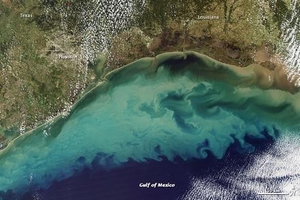Sacramento: Scientists discovered that the Gulf of Mexico’s “dead zone” had grown larger than average this year, posing a significant threat to marine life and ecosystems in the region.
The “dead zone” is the area of low to no oxygen that spans approximately 17,365 square kilometres, making it the 12th largest zone recorded in 38 years of measurements, according to the annual survey conducted by researchers supported by the National Oceanic and Atmospheric Administration (NOAA) and published Thursday.
Scientifically known as hypoxia, the “dead zone” occurs when excess nutrients from agricultural runoff and other sources flow into the Gulf via the Mississippi-Atchafalaya River Basin, Xinhua news agency reported.
These nutrients fuel algal blooms that deplete oxygen levels in the water. The resulting low-oxygen environment forces fish and other marine life to flee or face death.
The “dead zone” has substantial environmental and economic impacts. Studies have shown that hypoxia alters fish diets, growth rates, reproduction, and habitat use, with implications for commercially important species like shrimp.
It affects an area of habitat roughly the size of New Jersey state.
“The area of bottom-water hypoxia was larger than predicted by the Mississippi River discharge and nitrogen load for 2024 but within the range experienced over the nearly four decades that this research cruise has been conducted,” said Nancy Rabalais, professor at Louisiana State University and co-chief scientist for the research cruise, in the press release.
The annual dead zone measurement is a crucial metric revealing the efforts of the Mississippi River/Gulf of Mexico Hypoxia Task Force, a state/federal partnership which has set an ambitious goal of reducing the five-year average extent to less than 4,921 square kilometres by 2035.
However, the current five-year average is 11,131 square kilometres, highlighting the situation’s urgency and the significant challenge ahead.
“We must measure this region’s hypoxia as an indicator of ocean health, particularly under a changing climate and potential intensification of storms and increases in precipitation and runoff,” said Nicole LeBoeuf, assistant administrator of NOAA’s National Ocean Service.
–IANS


Comments are closed.